Before entering Begin Again, Begin Again, Renée Green’s 2015 exhibition at the MAK Center for Art and Architecture at the Schindler House in Los Angeles, the viewer was greeted as if by ghosts, voices animating a space not yet revealed. The voice recited dates broken with the refrain “begin again, begin again,” a challenge and a curse to return, to find, to locate. Gingerly, I ducked in the door, crept up the cramped stairs, and sat in the belvedere for a moment, half waiting for someone to reprimand me, half reprimanded by the voice seeping upward. I returned to the first floor to face a large gallery with three large, floor-bound mattresses covered in fitted sheets of pure red, blue, and orange. Their modularity, hue, and blunt function as surface formally recalled an earlier moment—the radical integration of design in the 1920s and the radical social provenance of the Schindler House itself—humorously translated into the contemporary via Ikea, that purveyor of solutions both transient and provisional. I know from Ikea mattresses and will take an invitation to flop whenever it’s offered. And so I did, making myself not-quite-at-home in a cold concrete space built for and inhabited by others, noticing for the first time the soft creases running the length of its walls, like the wrinkled sleep lines of a face.
Taking the form of a single-artist exhibition cum archive of artistic research, Begin Again, Begin Again consisted of six installation environments, each of which was keyed to its site—the Schindler House—as a basic unit. In so doing, Green restored the house’s rooms to a version of their prior domestic selves: a “media room” containing mattresses, TV monitors, and an overhead projector; three “studies,” each populated by flat birch-wood vitrines raised to the height of an architect’s drafting table; and two courtyard patios decorated with colorful banners, split spaces of entertainment with a sound piece buried deep in the hedges of the garden beyond. Installed with formal austerity, the house seemed prepped for a party—all the toys and books and laundry hidden away—that might never take place.
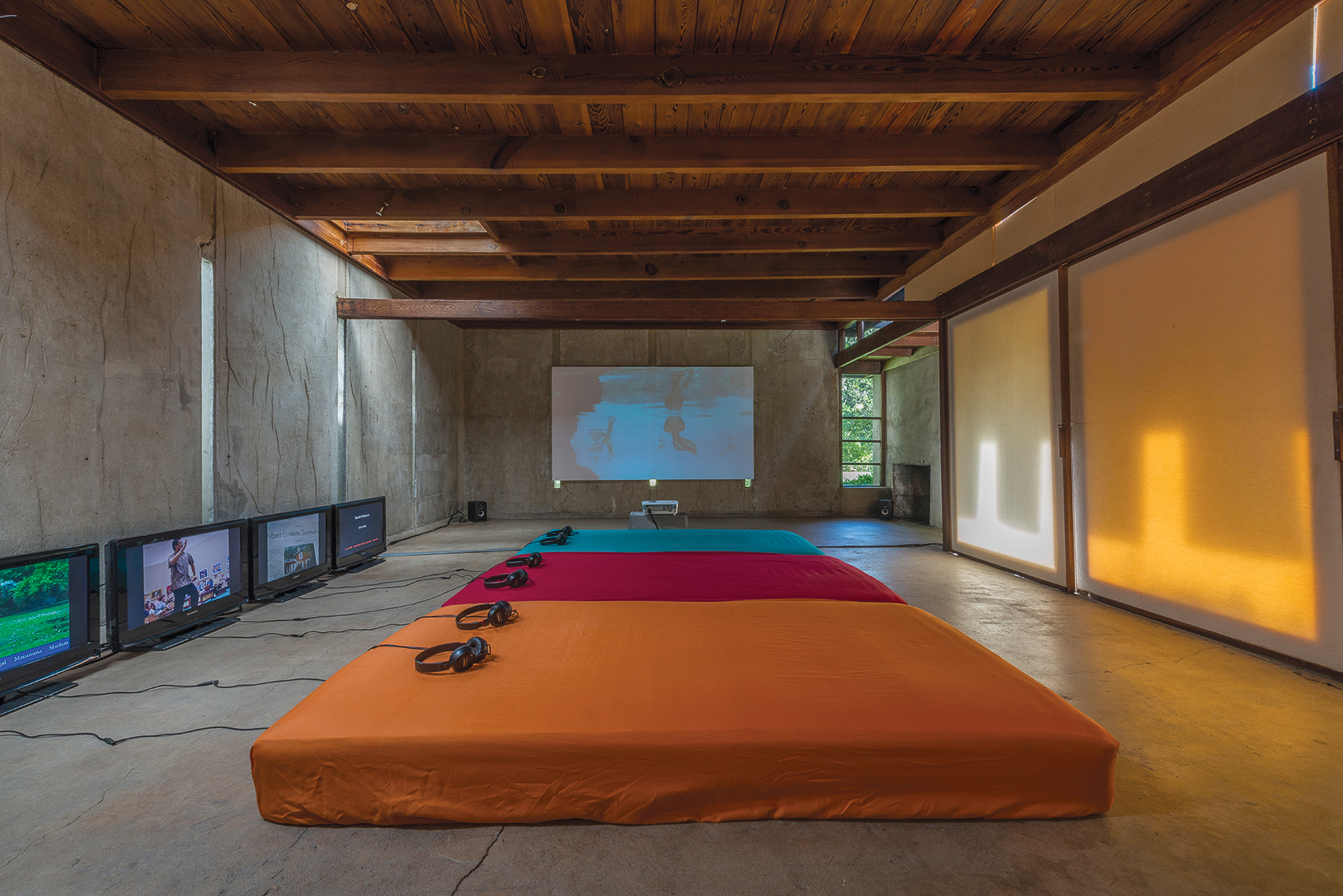
Renée Green, Begin Again, Begin Again, 2015. © MAK Center. Photo: Joshua White.
In that first room, the “media room,” four discrete videos (Elsewhere? [2002], Here Until October 2004 [2004], Climates and Paradoxes [2005], and Selected Life Indexes [2005]) and a projected twelve-minute film, Begin Again, Begin Again I. 1887-1929 (2015), were all huddled around the mattresses. In the next, a “study,” manuscripts, galleys, postcards, a book jacket cover, and a shrink-wrapped hardcover copy of Green’s just published book, Vitrine I (Other Planes of There) (2015), sat under Plexiglas. The second “study” contained two long vitrines, one displaying four letterpress prints (Vitrine II Within Living Memory, Selected Life Indexes, Albert Einstein, and Paul Robeson, all works, 2015), and in the other, two more letterpress prints, Years and Afters (both 2015), postcards announcing the artist’s 2006 public commission for Los Angeles’ Caltrans’ Code: Survey (2006) and a catalog for a recent exhibition of the architect Minsuk Cho, Before/After: Mass Studies Does Architecture (2014). The third “study” contained more letterpress broadsides in a single vitrine (Vitrine IV, 2015) that contained two essays by the house’s architect, R. M. Schindler: Manifesto: A Program (written in Vienna in 1912) and Space Architecture, which was composed in 1934. The twenty-eight banners of Green’s Space Poem #5 (Years & Afters) (2015), alternately listing consecutive dates and poetry verse, hung from the eaves of the building’s exterior, a thread of text binding the exhibition.

Renée Green, Begin Again, Begin Again, 2015. © MAK Center. Photo: Joshua White.
Begin Again, Begin Again (Circulatory Sound) (2015), the audio piece that greeted me at the entrance, followed the visitor throughout the house; it emanated from speakers placed in the interstitial zones between rooms and was anchored in sonic nodes on the vitrines themselves. The sound interlocked displays of video, paperwork, broadsides, proofs, ephemera, and bannered poetry with a consistent, nearly paranoid thrum: 1957, 1958, 1959, 1960, 1961. The sonorous recitation, sequential and nearly unmodulated, played spread out across the space of five rooms in melancholy progression—a threnody of facts pushing you to continue yet at the same time urging you to finish, regroup, review. The earliest date is 1887, the year of Schindler’s birth.
While each room’s installation carried individual content—cities and politics in the mid-2000s in the media room; the procedural drafts and proofs of artists’ writings in another; an economical presentation of Schindler’s own writings in a third—the connections between them remained unclear, leaving the viewer to search for her own thematic connections. And, in a sense, one such connection could be found in fact: the biographical overlap of each individual—Rudolph Schindler, Albert Einstein, W. E. B. Du Bois, Paul Robeson, Muriel Rukeyser, Lou Harrison, Renée Green—noted in various works throughout Begin Again, Begin Again. Looped together in video-essays; letterpress broadsides featuring their names, life dates, and significant events; in recorded readings of poetry; and in reprinted versions of essays, Green brought her individual subjects into existence as an against-the-grain community of pacifists, political activists, and shared intellectual thinkers.1 Known for discrete accomplishments, they are bound first by the relativity of their lifespans, second by their shared political beliefs, and third by their spatial grouping within the space of exhibition architecture. This conception of the interrelations of spaces within the structural envelope of a building, a central tenet of Schindler’s own practice, is tantamount to a rethinking of the role of design in architecture away from the autonomous modeling of materials into structures and into the modulation of space itself as social space.2 Yet without a deep reading of Green’s dense exhibition as a text, and the dense text of her book as its companion, such connection appears unreliable: an interrelation formed in the interior space of the artist’s mind and externalized as program.
This abundance of information—of content—displayed with clinical restraint is difficult to absorb and easiest to conceive of as a grouping of thoughts whose relationship belonged primarily to the artist herself. As its skeletal installation architecture suggested, the viewer browsed around, forever waiting for the artist to arrive in some authorial form to tell her how it fit together. This is what it feels like to be alone with information: awash in abundance, forever waiting for the connection to go through, confronted with the generous and endlessly frustrating opportunity to make sense of matter. To “think with” this information, to consider its demonstration of cultural movement and translation, requires the viewer to explore how social space is conditioned by both architectural form and methodology of exchange.
Green’s work engages the gaps and lapses between public and private memories of people, places, things, and events. For three decades, she has presented such exchanges as themselves an architecture of thought, in the form of installations that articulate both her methodology and the product of exchange. Beginning in particular with those of the early to mid-1990s, such as Import/Export Funk Office (1992), Secret (1994), and Partially Buried (1995–97), her works gather literal information, like books and records, together for a viewer to engage or ignore. In each case, the viewers fill a central requirement: inhabitation in some form.
Import/Export Funk Office, for example, arose from the artist’s own literal inhabitation of someone else’s space, when she took a sublet during a residence abroad in Cologne in the early 1990s. As she described it, the process of being dislocated into someone else’s world, as embodied in the furnishings and objects included in the four walls of his home, set off a prolonged inquiry into the mind of her sublessor, the cultural and music critic Diedrich Diedrichsen. Diedrichsen’s writing at the time focused on the circulation and reception of African diasporic culture in Germany, of which Green, herself African American, necessarily formed a part.3 The work that resulted, a set of gray metal archival bookshelves arranged into a rectangular room upon which rest copies of books from Diedrichsen’s library, listening stations for music, and TV monitors playing interviews between the artist and critic, reconstructed the architecture of encounter— the library, the small room, the thoughts of others—for the viewer, but crucially threaded it with Green’s own personal memories of her experience in the form of the video pieces and, by extension, her selection of objects for display. The work, which includes items imported from elsewhere and subsequently exported in the shuffle of items on offer, both enables circulation and itself circulates as an installation that can be broken down, shipped, and reconstituted in a variety of settings.

Renée Green, Import/Export Funk Office, 1992–93. Installation with audio, video, and reading materials; dimensions variable. The Museum of Contemporary Art, Los Angeles. Gift of Gaby and Wilhelm Schürmann.
Import/Export Funk Office offers neither central object nor narrative linearity presented for a viewer as resolved spectacle. The viewer is not asked to recreate the thoughts of the maker. Instead, the maker models and demonstrates the temporal, translational, comparative process through which meaning is produced by immersive browsing in the unknown. The result is a provisional system of communication generated in a specific place, at a specific time, in response to specific sets of conditions, what the artist and other scholars have referred to in other contexts as “contact zones,” functions of space motivated by exchange.4 Import/Export Funk Office’s logic requires a user—one who engages with subject matter in the manner of surreptitious research. Alone, the documents, banners, broadsides, and books mean nothing apart from their own existence. Drawn into a comparative dialogue of exchange, meaning, while originating from the artist herself, is produced in the viewer. Like this earlier work, Green’s Begin Again, Begin Again offered a personal inventory of accreting information, focused on elective alignments of like or unlike subject matters to form new sites of meaning. Submitting to the solitude of being alone with information, of being alone in someone else’s thoughts, Begin Again, Begin Again required the viewer to make herself at home, animating both exhibition and building with her own thoughts, her own processes of contact, connection, and exchange.
To understand the exhibition in this way requires returning to the idea of inhabitation as central to Green’s practice and therefore reading the Schindler House itself as an evocative object—a thing to think with, one whose functional status (in this case, as a house) encodes potential for personal meaning through an insistence on open form. With its pinwheel structure and lack of unified center, the House offers an austerely experiential encounter. The building was designed for radical openness and equality across its plan, designed to accommodate two couples simultaneously (originally R. M. Schindler himself and his wife, Pauline Grabling, as well as Pauline’s compatriot Marion Chase, a radical educator, and her husband Clyde, a contractor.)5 Living side by side, each couple occupied its own “apartment,” designed as wings extending from an entrance door and bathroom. Eschewing a traditional setup of centralized social space (the house’s kitchen was shared, and dining and living rooms removed altogether), Schindler instead placed work at the core of his decentralized plan. Each member of each couple received a large studio on the ground level, organized around a shared courtyard. In the place of bedrooms, the architect designed “sleeping baskets” on the roof, little belvederes cosseted in canvas and vines, for hammocks and beds. With domestic life condensed and cropped to its literal margins, the house, as traditionally read, consisted singularly of workspaces. With walls made, alternatingly, of cast concrete, canvas screens, and wood-framed banks of rectangular windows opening onto patios, work and leisure merged as a protocol of transfer. The House’s structure as a demonstration of the social space of ideas did not divide activity, rather it created a house offering simultaneous views of singularities merging into collectives.

R. M. Schindler, Kings Road House (Los Angeles, California), Roof Plan, circa 1921. Courtesy: R. M. Schindler Papers, Art Design & Architecture Museum, UC Santa Barbara. © UC Regents.
As a venue for Begin Again, Begin Again, the Schindler House formed the literal architecture of exhibition—spaces in which the intellectual work of creation takes place. However, its design and function should also be read as a consistent prompt for interpretation, as its architecture forcibly redirects the linearity and single-person perspective of a visitor watching, reading, listening, or seeing an exhibition. Instead, like Import/Export Funk Office, the house demands its visitor find her own narrative as it intersects the lives of others, migrating across different spaces and points of contact.6 The House stands, therefore, as what psychologist Sherry Turkle has called an “evocative object,” capable of catalyzing self-creation at the moment in and due to the circumstances under which they enter the life of its user.7 It is something that bridges the gap between an individual’s mental life and the rich world beyond her singularity.
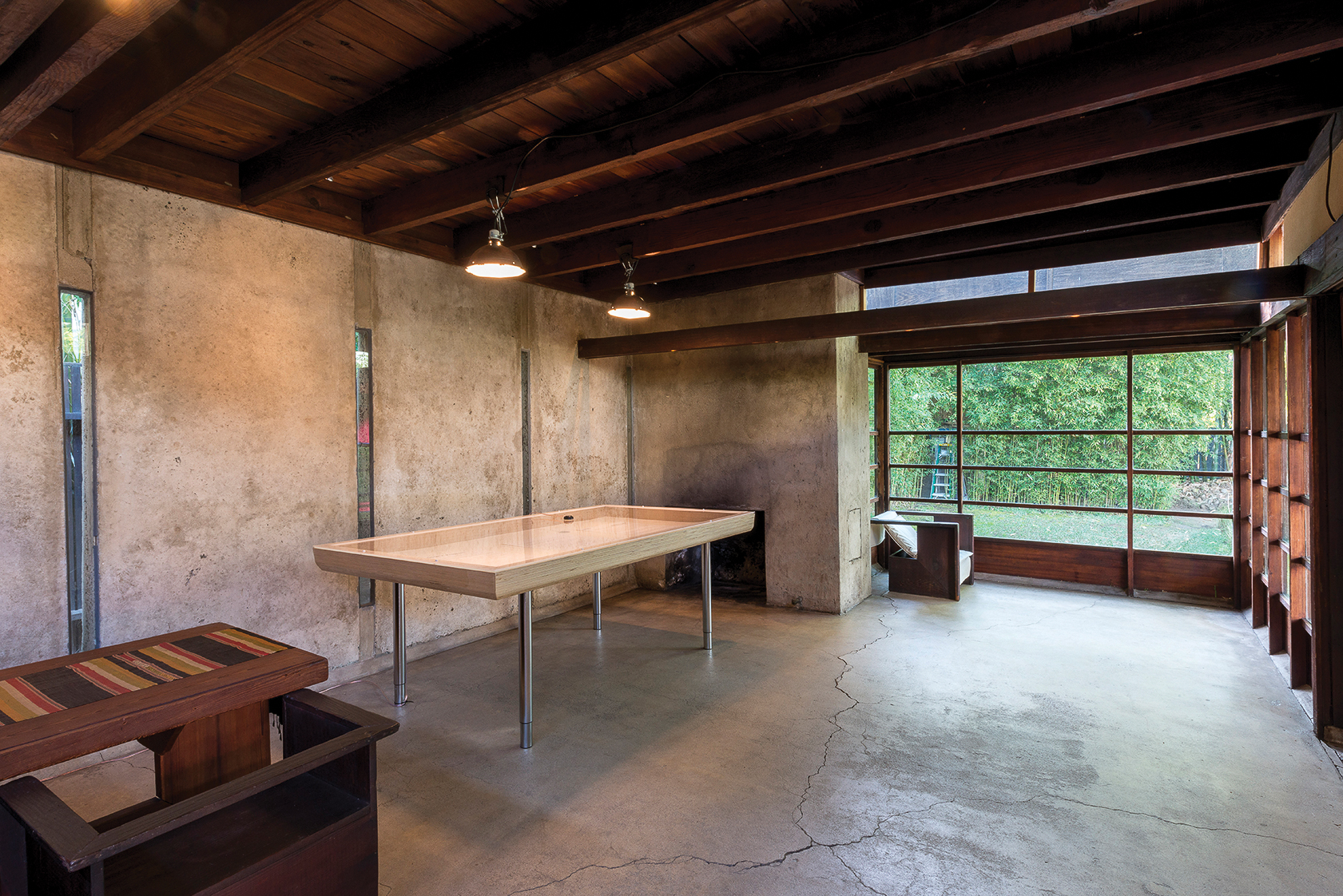
Renée Green, Begin Again, Begin Again, 2015. © MAK Center. Photo: Joshua White.
Schindler developed his theory of architecture in the first decades of the twentieth century, reorienting his practice away from the sculptural concerns of forms in space toward the open-form understanding of architecture as the form of space, an envelope of permission and control, the infrastructure of organization.8 His home, built following a move to Los Angeles (by way of Chicago), stands as his theory’s physical manifestation. Rather than investing buildings themselves with the symbolic and expressive capacity to speak, Schindler turned architecture into active-form: the spatialization of social exchange.9 As he wrote in his 1934 essay,
[Modern architecture] is developing in the minds of the artists who can grasp “space” and “space forms” as a new medium for human expression. The development of this new language is going on amongst us, unconsciously in most cases, partially realized in some. It is not merely the birth of a new style, or a new version of the old play with sculptural forms, but the subjection of a new medium to serve as a vehicle for human expression.10
The work, “Space Architecture,” was composed in the very room in which Green’s Vitrine IV sits, containing her letterpress print of the essay’s texts, an induction of space into information, object sublimated into ideas, a thing to think with.
I like architecture because there is in it the knowledge of building something up, as well as tearing something down—quite literally. That is its history and its practice. …But with architecture and art, as with music, there is a plan, drawings, a score, based on what was designed or composed, something that can be reanimated by someone else at another time in another space. Passed on to the living.11
How do we pass on history, information whose power lies in its ability to shape the present through absence, to the living? Is it through the population of thought with reminders of the past? A present response to precedence, to the works of others? In a sense, these are the critical questions an approach to Green’s work requires: how to transform the significance of others’ actions into the relevance of personal knowledge, how to transform the empty party of her installations into the pulsing, living experience of connection.
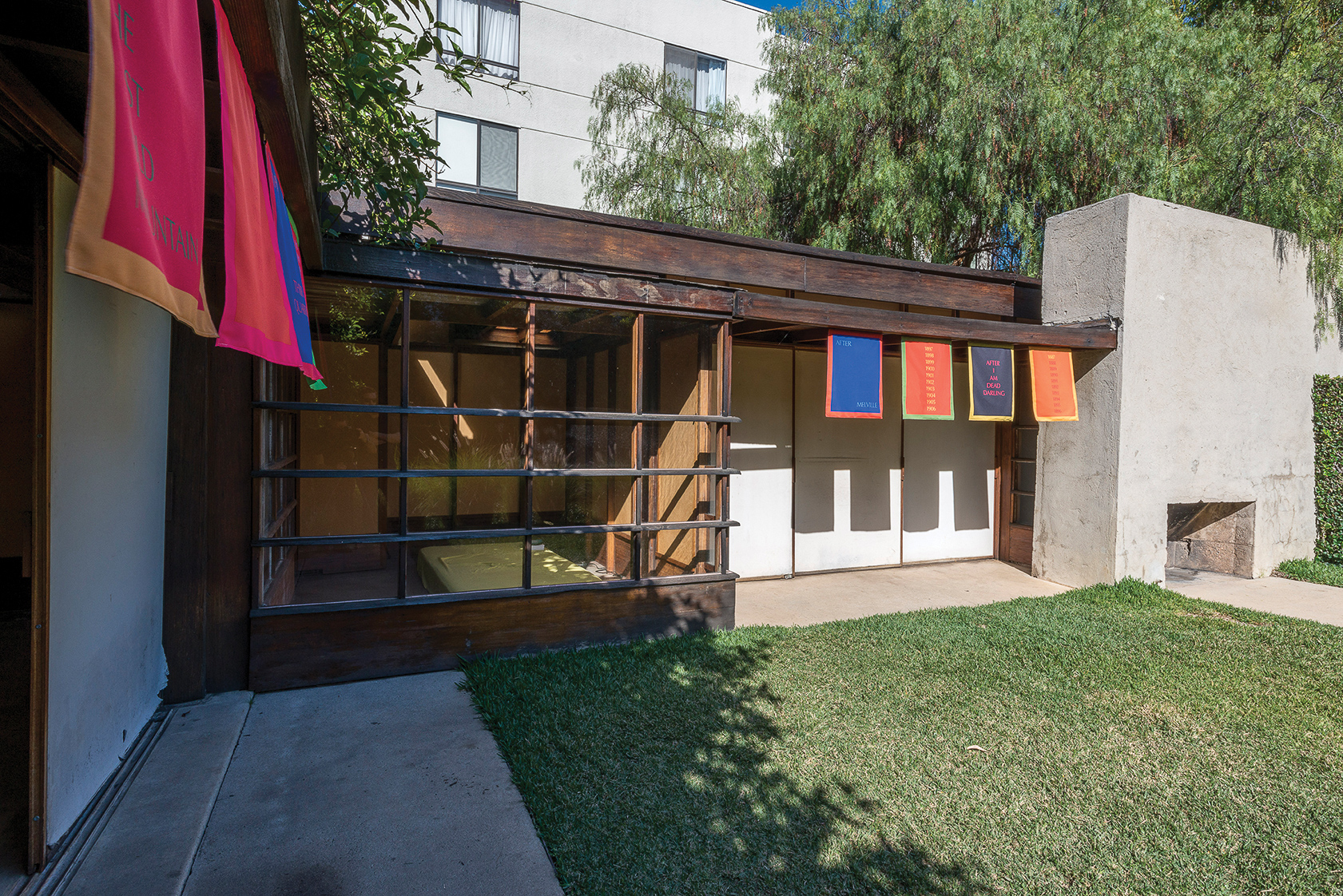
Renée Green, Begin Again, Begin Again, 2015. © MAK Center. Photo: Joshua White.
Perhaps I should begin again, from my own encounter with Green’s exhibition as the terminus of a long morning drive from Las Vegas, where I live now and things are still new and strange to me, to Los Angeles, where I used to live and things are (somewhat) more familiar and irrevocably part of my personal history. I walked in the door of the MAK Center, was greeted by sound, and made myself at home, spotting those three colorful mattresses on the floor. From their foamy support, headphones donned, I gained a partial view of other spaces, other “theres” presented on screens: Vienna and California in the months before the 2004 presidential election in the United States in Here until October 2004 (2004); utopian architectures and paradisiacal gardens in Elsewhere? (2002); and even the other “there” of writing, as selections of the work of Albert Einstein, W. E. B. DuBois, Paul Robeson, Muriel Rukeyser, and Lou Harrison scrolled down a screen in Selected Life Indexes (2005).
One screen in particular caught my eye, playing images of the architecture of Berlin over and over again. The work, Climates and Paradoxes, begins with Green taking an apartment in a pre-fab building (Plattenbau) in the zone of the old Wall. Through an investigation of its address, Kurfürstenstrasse 123, the artist uncovered a host of historical associations radiating from her temporary home. Through the newness of Potsdamer Platz, Mitte’s wearable scars, and the bucolic improbability of Wannsee, the video detoured through the city’s contact zones with the intimate under-articulation of a resident and the incredulity of an expat. The video, narrated by Green, culminates in a discussion of the 2005 Einsteinjahr, a yearlong cultural celebration of the life and work of the physicist on the occasion of the 100th anniversary of his theory of relativity. Green finds the physicist’s summer home in the small town of Caputh, southwest of Berlin, a space that transformed, much like Schindler’s own house, into a salon of social exchange. Like the chain of associations bringing the video’s investigations together, the visuals—a pastiche of glass rising, construction ditches pressing down, of the city center being simultaneously destroyed and rebuilt—charted the coming to knowledge of place through the material awareness of its architecture, Benjamin’s classic formulation of history collectively received in distraction.12 Radiating from a single building, a single address, a single “evocative object,” Green’s video circled back, demonstrating without declaring how history becomes relational through an exchange of personal encounters with information.
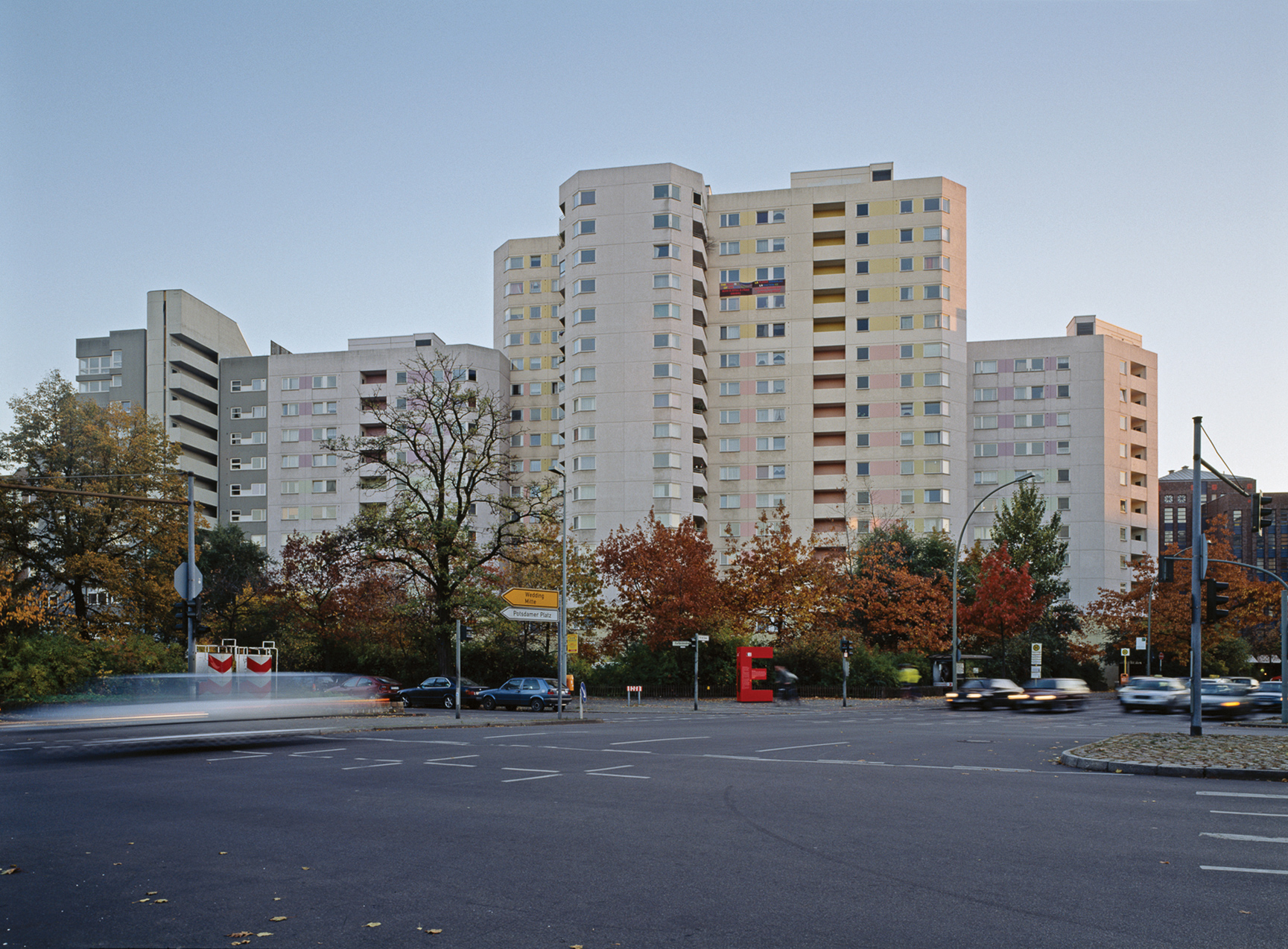
Renée Green, Climates and Paradoxes, 2005. Digital film still. Courtesy of the artist and Free Agent Media.
Lying rapt on this mattress, in my provisional home for the hours I spent there, I came face to face with my own past life. I too lived in Berlin in 2005, when Climates and Paradoxes was made. A wanderer with part-time employment adrift in a city whose massive scale was muffled by its foreign tongue and seasonal unsociability, I too traversed Green’s architectural contact zone without knowing it, down to the very street, Kurfürstenstrasse, where she found her Plattenbau. Responding to Craigslist ads, hunting down furniture, I visited stacks of these buildings, finding and forming a patched network of expatriates, mostly artists, in their own processes of moving on, moving from these experiments with collective social space. I was grateful for the things they’d leave behind, including books and furniture, but mostly magazines imported by subscription from the United States. My process of making myself at home depended on the circulation of information in a contact zone of personal movement in and out of place. As George Kubler wrote, this very reception, transmission, and redirection is precisely what makes history, an unstable message filtered through and formed by encounters in the present whose significance is relayed to a future it cannot anticipate.13
In Berlin I lived on a cheap mattress on the floor of a small apartment shared with two roommates. The walls were thin. We shared a kitchen, but no other common space. We scored a cheap TV, which lived in my room on the floor, several feet away from the foot of my bed—no more distant than Green’s monitor from the mattress I lay on in Los Angeles. With the compulsion of the newly arrived, I watched every program I could, the more local and obscure the better. In between the historical documentaries and the evening news, my favorite was a restaurant-review show on the local Berlin station, which covered the absurdity of pork, parsley, potato, and red cabbage laid out episode after episode, little home-style nodes connecting the city in a network of familiarity. It was before YouTube, and we walked around our apartment laptops aloft in the hopes of catching a bar of Wi-Fi service. Phone calls were expensive; we communicated tentatively to new acquaintances, to each other, and back home through scraps of ephemeral text in email and SMS messages. The TV brought me, through image, the point of contact I coveted in the form of information broadcast, delivered, and repeated to my bed, to this room with crappy papered-walls and stacks of magazines addressed to other people, wrinkled with a texture of their own. From my room, nervous, chilly, isolated in this strange city of refuge, my media bedroom became the node of transmission for a world immediate and increasingly homey, yet unknown.
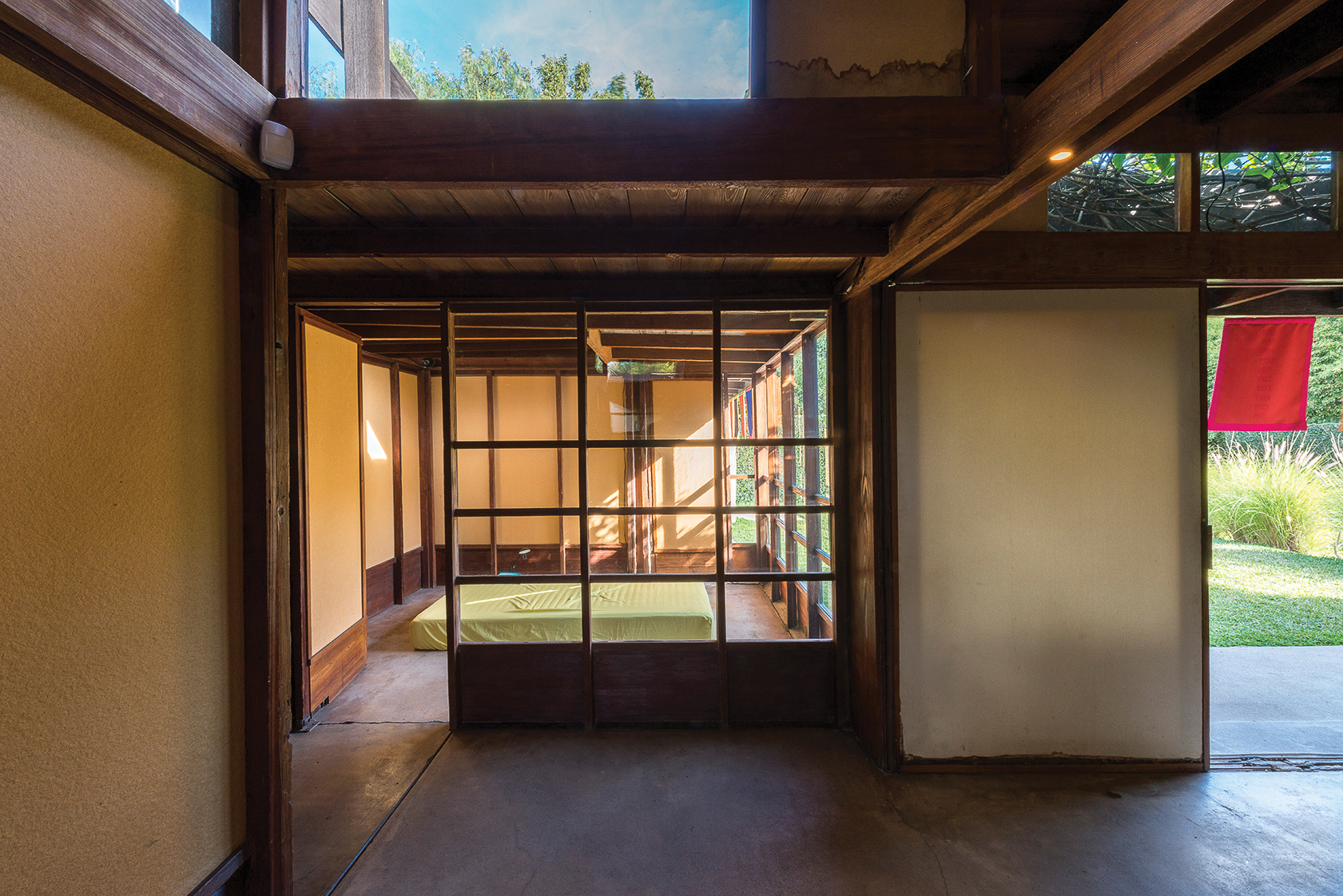
Renée Green, Begin Again, Begin Again, 2015. © MAK Center. Photo: Joshua White.
“Technology proposes itself as the architect of our intimacies,” writes Turkle in a book explaining the network as an evocative object of our time.14 For Green, it seems, like the Internet, the architecture of intimacy is something wherein a center does not hold: the temporal encounter with space; the discursive act of reading, browsing, talking; the mediated collage of knowledge all gained and lost through an encounter with information that passes, pauses, and circulates. It recalls how the significance of a number, read deeply in pairs, nineteen-forty-two, transforms into a date, hooking into the mind of the listener, searching for recognition but inevitably, endlessly, moving on. If intimacy forms in contact, no matter how brief, its architecture is to be found in its exhibition, the physical layout of information filtered through encounters with things to think with, apertures into the foreign territory of someone else’s mind. Settling into one last room of Begin Again, Begin Again’s occupation of the Schindler House—onto a yellow mattress in what had been the Chases’ small nursery—I opened a copy of Green’s collected writings, anchored to the wall by a thin cord. Skimming through, I rested on an essay describing another experience Green had of making herself at home. Invited to camp out in an apartment in a Le Corbusier housing project as part of an artist’s residency, she took to a journal as a means of chronicling and processing the experience of being alone in the end-product of someone else’s dream. “Tonight I have one more piece of furniture,” she wrote, “a mattress. Maybe I’ll be able to go to sleep.”15
Susanna Newbury is Assistant Professor of Contemporary Art History, Theory, and Criticism at the University of Nevada, Las Vegas.
